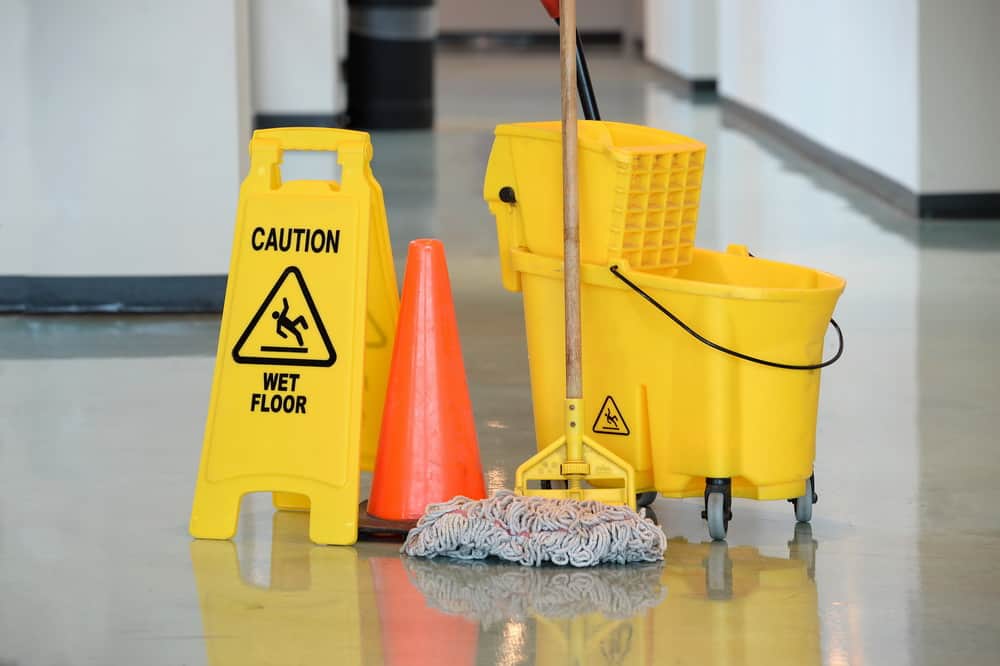
Wet mops are not something we address frequently in our posts. It’s not that we have something against them — floorcare is something Alsco takes seriously. Our floorcare products include a variety of mops.
What we refer to as a “classic” wet mop is a tried-and-true string mop. It used to be that string mops were the only mops available. With the increase in popularity of microfiber in healthcare and other settings, that’s no longer the case, though the classic wet mop is still a favorite in many industries — and for good reason!
Wet mops are fantastic tools that can do a wonderful job if used correctly. Like any other tool, there are right and wrong ways to use wet mops. We have put together a collection of tips for getting the most out of your wet mops.
1. Use proper technique.
People who cannot seem to get wet mopping right are often unknowingly struggling with technique —they were never taught how to use a wet mop. Using a wet mop the right way starts with soaking it in soapy water and then transferring that water to the floor and spreading it evenly as you mop.
Next, return the mop to the water to rinse it out. If you are using a mop bucket with a ringer, use the ringer to extract excess water. The idea is to end up with a damp mop, rather than a saturated one, as you continue to mop your floors. While you are doing this, the soapy water has time to loosen dirt and grime. Now, take your damp mop and run it back and forth over the floor to soak up the water and dirt. Then, move to the next section of floor and repeat the process.
2. Use hot water.
Wet mops work best when you use hot water along with a cleaning solution. Hot water does a better job of loosening dirt and debris. It also does a better job of rinsing the mop when you place it in the bucket. You will find that your floors end up much cleaner if you get the water as hot as you can.
3. Avoid chlorine-based cleaners.
Chlorine-based cleaners can do a great job on your floors. However, they are not good for wet mops. Chlorine is a corrosive substance that eats away at mop fibers. Using chlorine-based cleaners only reduces the life of typical retail mop heads. The good news is that there are plenty of non-chlorine solutions that clean just as well without causing harm. The better news is that Alsco offers mop heads on a rental basis, which means you’ve got mops that can stand up to harsh chemicals.
4. Rinse the wet mop after use.
There is a temptation to finish mopping and then leave the mop in the bucket until the next day — don’t do it! It’s best to rinse your mop after every use. If you let it sit in the bucket, you run the risk of bacteria and other germs springing to life, making the mop head stink and reducing its cleaning capability.
Once you’ve finished mopping, it’s best to rinse the mop under hot water and then put it through the ringer one more time. Then, hang it on a nail or hook so that the mop strings can straighten out and dry. This is the best way to guarantee your mop heads last as long as possible.
If you’re looking to upgrade your floorcare program, let us know. We have what you need to take care of your floors, including wet and dry mops, protective floor mats and other products and services to help you maintain your business.
